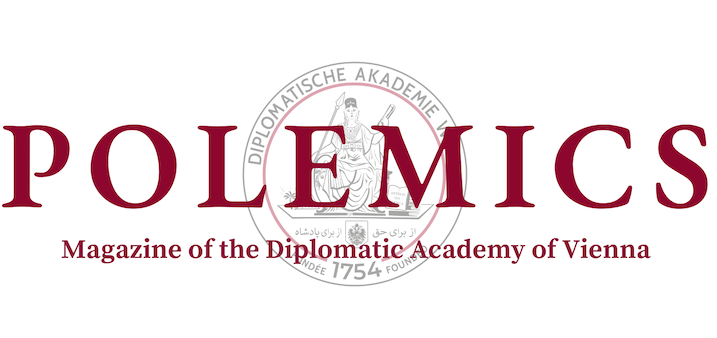The Indo-Pacific is gaining systemic gravity in international affairs more than ever before. Avoiding falling into a zero-sum game would be beneficial for all.
Amid growing geopolitical tension following China’s rise, President Joe Biden has made his ‘first bold move on Asia’. He appointed Kurt M. Campbell as the Indo-Pacific Coordinator, a newly established position within the National Security Council (NSC). Campbell is considered the architect of the Obama administration’s ‘Pivot to Asia’ strategy—the United States’ attempt to rebalance and reallocate its foreign policy resources to East Asia. To some extent, his addition seemingly reassures American allies in the Indo-Pacific region that the new administration will maintain the United States’ hard stance on China.
The creation of this position and even the term ‘Indo-Pacific’ by no means lacks political meaning. Though it was coined by the German geopolitician Karl Haushofer in the early 20th century, it was not until the 2000s that the phrase came into practical use, primarily as a response to China’s widening sphere of influence and the emerging hegemonic front-line in the region. This intentional shift away from ‘Asia Pacific’ signals a new centre of geopolitical gravity, which has been gradually forming since the late 2000s. In particular, a closer look at the Free and Open Indo-Pacific (FOIP) initiative reveals the new centre of geopolitical gravity.
In 2007, during his speech in New Delhi titled ‘Confluence of the Two Seas’, Japan’s former prime minister Shinzo Abe inaugurated the concept of the ‘Free and Open Indo-Pacific’. He described the Indian Ocean and the Pacific as a common space for ‘Freedom and Prosperity’ stretching from India to the U.S. Although it was not embraced in official documents, then U.S. Secretary of State Hillary Clinton echoed Abe in 2011 in her speech regarding the ‘Pivot to Asia’ strategy. A year later, Australia followed suit, and India soon after.
As expressed in his paper Asia’s Democratic Security Diamond, Abe developed the idea further just after his return to power in 2012, putting ‘peace, stability, and freedom of navigation’ of the Indo-Pacific at the core of his foreign policy agenda. The full concept of FOIP was thus materialized by the Abe Administration as Japan’s pivotal foreign policy doctrine, embodied in Japan’s strategic documents beginning in 2016. The FOIP gradually appeared in official U.S. documents from 2017 on and was embraced in strategy papers such as A Free and Open Indo-Pacific: Advancing a Shared Vision, published by the Department of State in 2020.
In reality, Japan engineered the initiative. Having its critical lifeline sea lanes stretching through the East China Sea, the country has had significant incentives for secured navigation. Yet the growing U.S.-China rivalry seemingly put the reins into Washington’s hands. After a lapse of more than a decade, the foreign ministers of Japan, Australia, India, and the United States gathered in New York and Tokyo in 2019 and 2020 respectively for the Quadrilateral Security Dialogue (Quad), which has been referred sometimes informally as ‘Asian NATO’. A virtual summit meeting of the Quad was held on 12 March upon Biden’s request, underlining the region’s importance to the Biden Administration.
Some European countries have started to align themselves with the FOIP as well. Germany released its strategic document entitled ‘Policy guidelines for the Indo-Pacific region’ last September and it decided to send navy forces to the region. In an interview with Nikkei, Japan’s leading economics and business newspaper, Germany’s foreign minister Heiko Maas said that “Germany will take part in the rule-making process to reinforce rule-based cooperation in the Indo-Pacific region”. Britain sent the HMS Queen Elizabeth carrier strike group to the region for a long-term mission and reinitiated the foreign and defence ministers’ meeting with Japan in February 2021. The French frigate Prairial deployed in Asia-Pacific ‘is one element of our work for the benefit in the Indo-Pacific region’, posted the French Embassy in Tokyo in March. Considering itself as an ‘Indo-Pacific power’, France is embarking on checking the growing Chinese influence in the region. The Netherlands has also expressed support for the initiative, though only through political statements. The Indo-Pacific affairs are not ‘the fire on the opposite shore’ anymore for Europe.
Despite the recent outpouring of support, the FOIP’s likelihood of success remains unclear. Managing the varied perceptions and expectations among key actors would be challenging. Whereas Japan, Australia, and India put more weight on infrastructure and connectivity, the United States focuses more on security and defence. India agrees with the FOIP but not with the Asian version of NATO. ASEAN countries are thoughtfully keeping balanced distances from participation in the initiative. American leadership is by no means reliable. Japan’s effectiveness partly depends on how other key actors in the region deal with the still-vivid memories of the Second World War. If poorly managed, the initiative will evaporate, becoming merely a sensational ‘headline-grabbing idea’. China’s foreign prime minister Wang Yi already suspects this outcome.
The FOIP would not (and should not) be a containment strategy. Rather, it should be a search for co-existence. If all goes well, a competitive and complementary relationship between China’s One Belt and One Road Initiative (BRI) and that of the FOIP would benefit all stakeholders. After all, China also aims to avoid geopolitical escalation. With the Indo-Pacific’s newfound status as the centre of gravity in politics, avoiding a zero-sum game would thus be crucial, but it would not be straightforward. Both sides have their own uncompromising conditions that make cooperation difficult. While fierce nationalism in China impedes the Chinese Communist Party (CCP) from softening their anti-Western rhetoric, human rights and democracy are non-negotiable core values for Western countries. Nevertheless, China should tone down portraying itself as a guiding challenger to the West if its apparent geopolitical ambitions are actually based on a mere pursuit of economic security. The West, on the other hand, must balance value-oriented diplomacy and pragmatic solutions.
An old Chinese idiom, ‘Two tigers cannot share the same mountain’, has come to be used ironically in referring to potential geopolitical conflicts in East Asia, indicating a sinister pessimism for the co-existence of key actors in the region. Yet, what is genuinely needed is not a colosseum but a concert. The question is not anymore whether there is a possibility of coexistence. If the tigers, whether from the West or East, want to avoid any otherwise unnecessary tragic confrontations, they must find a way to coexist on the same mountain. Therefore, the FOIP should be developed not as an exclusive and antagonistic order but as an inclusive framework with a relationship with China, at least in the long term. The transnational challenges the world is facing today cannot be dealt with in any way without China’s involvement. Only then can we see the path to a non-zero-sum situation.
Edited by Sandra Edelbacher; Photo credit: Christopher Jones, Pixabay




